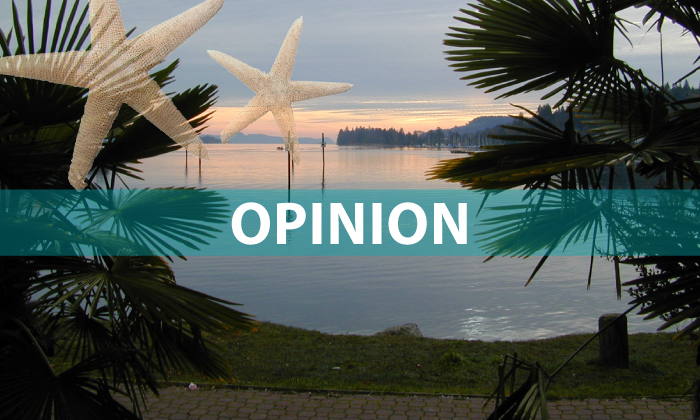By BRIONY PENN, ELIZABETH WHITE, CATE MCEWEN AND MELANIE FURMAN
We would like to provide more historical context to the Jan. 26 editorial regarding the equestrian/cyclist use of a bridge at Xwaaqw’um/Burgoyne Bay, and encourage the Driftwood to take a deeper dive into the stories of this extraordinary place.
In 1996, four levels of government, local conservation organizations and other local groups met with the intention of securing large land holdings for conservation in the south and west of Salt Spring, including the Prince Thurn von Taxis land holdings (one-tenth of Salt Spring) at Xwaaqw’um and adjacent large Crown parcels. This alliance, the South and West Salt Spring Conservation Partnership, met for three years up until the prince’s death in 1999, at which point the land was purchased by Texada Land Corporation, whose interests were large-scale logging and land development. National attention was briefly focused on the Salt Spring logging protests of 1999-2000 as the new owner logged the forests.
Underlying the success of the campaign to protect the lands was a September 2000 proposal sent and signed by representatives from the Capital Regional District, the Islands Trust, the province and the federal government to the Pacific Marine Heritage Legacy Fund (PMHLF), a joint provincial/federal fund set up for acquisition of conservation lands of national/provincial significance in the Gulf Islands — eventually contributing the bulk of funds needed with $13.7 million. This proposal was the product of four years of meetings, research, inter-agency cooperation and community effort.
An account of this backstory is in the 2003 Background Report for Burgoyne Bay Protected Area on Salt Spring Island, which was sent to BC Parks by the Friends of Salt Spring Parks Society.
While the PMHLF was being deliberated, islanders brainstormed alternate financing for the entire land purchase, which at the time included a range of visions for the lands, from soccer fields to ecovillages, sustainable forestry, organic gardens, equestrian use, disc golf, mountain biking and of course ecological protection. Ultimately, however, it was this PMHLF document by which the administrators of the fund rationalized their decision to buy the core ecologically important lands. The foundational reasons for their protection were conservation of rare and endangered ecosystems, fish and wildlife values and First Nations heritage values.
The recent bridge removal was undertaken by BC Parks after a rain event in 2018 washed away the foundations and brought many tonnes of gravel backfill into the creek, heavily impacting fragile salmon and trout stream habitat and an important sacred archaeological site. After consultation with the Salt Spring Trail and Nature Club and local equestrians, BC Parks chose not to reinstall the bridge, citing contention with neighbouring landowners — both the CRD and private landowners.
Over the last 20 years since the park was created, ecological research, monitoring, mapping and now watershed restoration have been almost entirely led by multiple Salt Spring volunteer experts in their ecological fields. Data show there are declines in bird, fish and marine species populations.
Most recently, Quw’utsun elders and knowledge keepers of the Stqeeye’ Learning Society have taken an active stewardship role with research, monitoring and mapping within the watershed. Their leadership, teachings and work includes specialized ecological and educational values sorely needed in a time of human-caused climate change and biodiversity collapse. This cultural work and witnessing has been available to Salt Springers young and old, including workshops and learning days for multiple School District 64 classes over the last six years.
As we all attempt to shift and adapt to the multiple crises of our times, the importance of in-depth investigative journalism becomes ever more important. Local newspapers have been disappearing like the ruffed grouse that once inhabited the whole island and are now reduced to the odd rare sighting at Xwaaqw’um. We see the value in the Driftwood as an award-winning publication and wish to contribute to the public platform with our collective understanding of the contemporary foundational values we, the undersigned and many more, offered when putting our bodies on the line to protect and conserve Xwaaqw’um and all its richness.
The writers worked on the Texada land issue in many capacities, from mapping wildlife and fundraising to direct action and posing in the nude for the Salt Spring Women Preserve and Protect calendar.

